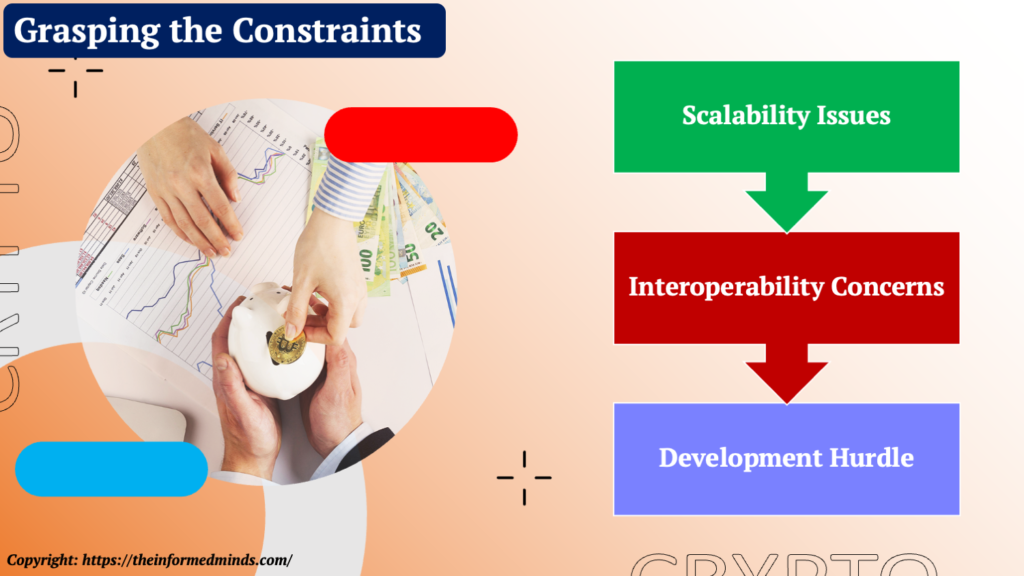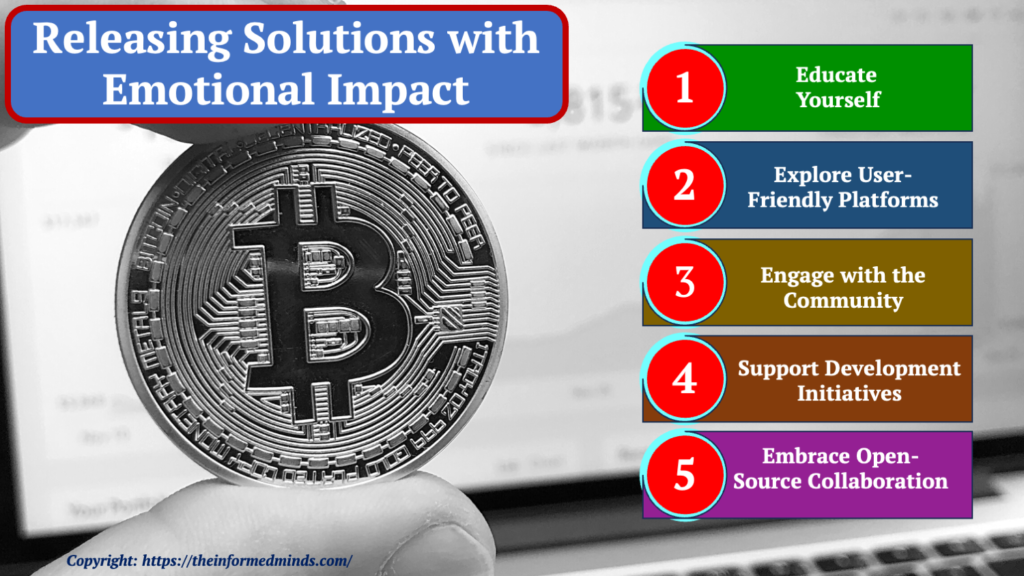To Share is to Show You Care!
In the ever-evolving landscape of cryptocurrency, the demand for decentralized applications (DApps) continues to surge. However, the frustration stemming from the limited availability of these apps can be disheartening. Fear not! This blog post will guide you through unleashing the best emotional solutions to break free from the chains of limited decentralized apps in 2023.
1. Why the Frustration?
The limited availability of decentralized apps in the cryptocurrency space has left many users feeling constrained. But fret not; we’re here to help you navigate through these challenges and find the emotional solutions you need.
2. Understanding the Limitations
Before diving into solutions, let’s explore the reasons behind the limited availability of decentralized apps:

2.1 Scalability Issues
The scalability challenge in decentralized applications arises from the growing number of users and transactions within a blockchain network. As more participants join, the network’s capacity to process transactions may become strained. This often leads to slower confirmation times and higher fees. Blockchain projects are actively working on solutions, such as layer 2 scaling solutions (e.g., sidechains and state channels) and improvements in consensus algorithms, to address these scalability concerns.
2.2 Interoperability Concerns
Interoperability refers to the ability of different blockchain networks to communicate and share information seamlessly. Unfortunately, many blockchain networks operate in isolation, hindering the smooth transfer of assets and data between them. This lack of interoperability limits the functionality of decentralized applications, preventing them from reaching their full potential. Initiatives like cross-chain protocols and standardized communication protocols aim to bridge these interoperability gaps.
2.3 Development Hurdles
Building decentralized applications requires specialized knowledge of blockchain technology, smart contract development, and often a specific blockchain platform’s programming languages. This creates a barrier for developers who may not be familiar with these technologies, slowing down the overall development pace. Efforts to simplify the development process through user-friendly frameworks, extensive documentation, and educational resources aim to make DApp development more accessible to a broader range of developers.
Understanding these limitations is crucial for users and developers alike, as it sheds light on the challenges the decentralized ecosystem faces. As the blockchain space evolves, ongoing innovation and collaborative efforts seek to overcome these hurdles, fostering a more robust and user-friendly environment for decentralized applications.
3. Unleashing Emotional Solutions

3.1 Educate Yourself
Stay informed about the latest advancements in blockchain technology and decentralized applications. Knowledge is power, and being aware of the industry’s trends can help you make informed decisions.
Start by following reputable cryptocurrency news sources, subscribing to newsletters, and participating in webinars or online courses. Understanding the underlying technology, such as smart contracts and consensus mechanisms, will empower you to assess the potential of different DApps.
3.2 Explore User-Friendly Platforms
Look for cryptocurrency platforms that prioritize user-friendly DApps. Platforms that focus on simplicity and accessibility often provide a more extensive range of decentralized applications.
Research and identify platforms known for their user-friendly interfaces. These platforms often prioritize the development of DApps that cater to a broader audience, making it easier for users with varying levels of technical expertise to engage with decentralized applications.
3.3 Engage with the Community
Join online forums, social media groups, and community discussions related to cryptocurrency. Engaging with like-minded individuals can open doors to discovering new and innovative DApps.
Actively participate in discussions, ask questions, and share your experiences. Communities provide valuable insights into hidden gems and upcoming DApps. Networking with developers and enthusiasts can lead to valuable recommendations and firsthand experiences.
3.4 Support Development Initiatives
Back projects that aim to address the limitations of current DApps. By supporting development initiatives, you contribute to the growth of the decentralized ecosystem.
Keep an eye on crowdfunding platforms that support blockchain projects. Consider contributing to initiatives that align with your values and goals. Supporting development not only helps promising projects succeed but also encourages innovation within the decentralized space.
3.5 Embrace Open-Source Collaboration
Actively participate in open-source collaborations within the blockchain community. Contributing to the development of decentralized applications fosters a sense of community and ensures continuous improvement.
Explore open-source projects on platforms like GitHub. Even if you’re not a developer, you can contribute by providing feedback, reporting bugs, or assisting with documentation. Open collaboration accelerates the evolution of DApps and promotes a culture of shared knowledge and innovation.
4. Crypto Applications for daily use
Discover the must-have apps and applications recommended by our editorial team to effortlessly manage your cryptocurrency business!
4.1 Token Metrics

4.2 CoinRule

4.3 CoinSmart

4.4 GeminiExchange

4.5 BitcoinIRA

Conclusion
Breaking free from the chains of limited decentralized apps requires a combination of education, exploration, community engagement, supporting development initiatives, and embracing open-source collaboration. In 2023, the cryptocurrency landscape is poised for significant advancements, and by adopting these emotional solutions, you can unlock the full potential of decentralized applications. Remember, the future of decentralized finance and applications is in your hands. Stay informed, explore new possibilities, and be an active part of the ever-expanding cryptocurrency community!
Frequently Asked Questions
Q1: What are some of the downsides of decentralized applications?
Answer: Decentralized applications (DApps) face challenges such as scalability issues, slower transaction processing times, and the potential for security vulnerabilities. Additionally, the user experience may vary compared to centralized counterparts, and the development process can be more complex.
Q2: What are decentralized applications, and how does a DApp interact with a blockchain?
Answer: Decentralized applications (DApps) are applications that operate on a decentralized network, typically utilizing blockchain technology. A DApp interacts with a blockchain by leveraging smart contracts. These self-executing contracts enable trustless and transparent execution of predefined rules, ensuring the integrity and security of the application’s processes.
Q3: What is an example of a decentralized software?
Answer: An example of decentralized software is the BitTorrent protocol, which allows for the peer-to-peer sharing of files without the need for a centralized server. Users can download and upload content directly from and to other users, creating a decentralized network for file sharing.
Q4: What is the objective of decentralized application?
Answer: The primary objective of a decentralized application is to operate without a central authority or intermediary, ensuring trustless and transparent interactions. DApps aim to provide users with more control over their data, increased security, and a more inclusive and censorship-resistant environment.
Q5: What are the three disadvantages of decentralization?
Answer: The three disadvantages of decentralization include potential coordination challenges, difficulties in maintaining consistency across a decentralized network, and the risk of slower decision-making processes due to distributed decision-makers.
Q6: What is the weakness of decentralized?
Answer: One weakness of decentralization is the potential for coordination difficulties. Decentralized systems may face challenges in aligning various nodes or participants towards a common goal without a central authority directing actions.
Q7: What is the most popular use for decentralized applications?
Answer: The most popular use for decentralized applications is in the realm of decentralized finance (DeFi). DeFi DApps facilitate financial services such as lending, borrowing, trading, and yield farming without relying on traditional banking institutions.
Q8: What is an example of a dApp?
Answer: An example of a decentralized application is Uniswap, a decentralized exchange (DEX) built on the Ethereum blockchain. Uniswap enables users to swap various cryptocurrencies without the need for a centralized authority.
Q9: Are dApps really decentralized?
Answer: While many dApps aim for decentralization, the degree of decentralization can vary. Factors such as the underlying blockchain’s consensus mechanism and the level of control exercised by developers can influence the decentralization of a dApp.
Q10: What are the pros and cons of decentralized apps?
Answer:
Pros: Increased security, transparency, censorship resistance, and user control over data.
Cons: Potential scalability issues, slower transaction processing, and a more complex development process compared to centralized applications.
Q11: What platforms are decentralized?
Answer: Decentralized platforms include blockchain networks such as Ethereum, Binance Smart Chain, and Polkadot. These platforms support the development and deployment of decentralized applications.
Q12: What is an example of a decentralized blockchain?
Answer: Ethereum is an example of a decentralized blockchain. It serves as a platform for various decentralized applications and smart contracts, providing a decentralized and secure environment for developers.
Q13: How do you create a decentralized application?
Answer: Creating a decentralized application involves defining the application’s purpose, choosing a suitable blockchain platform, developing smart contracts, and implementing a decentralized consensus mechanism. Developers also need to consider user interfaces, security, and testing.
Q14: What is the biggest benefit of decentralized?
Answer: The biggest benefit of decentralization is the removal of a single point of control or failure, leading to increased security, transparency, and resistance to censorship.
Q15: What are the components of decentralized applications?
Answer: The components of decentralized applications include smart contracts, which define the rules and logic of the application; a decentralized blockchain for data storage and validation; and a user interface allowing users to interact with the application.
The Informed Minds
I'm Vijay Kumar, a consultant with 20+ years of experience specializing in Home, Lifestyle, and Technology. From DIY and Home Improvement to Interior Design and Personal Finance, I've worked with diverse clients, offering tailored solutions to their needs. Through this blog, I share my expertise, providing valuable insights and practical advice for free. Together, let's make our homes better and embrace the latest in lifestyle and technology for a brighter future.

